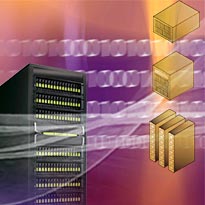Home
From Wikibon
| Line 5: | Line 5: | ||
*[[2009 Storage budget cuts - what are your options?|Read the Peer Incite Research Notes]] | *[[2009 Storage budget cuts - what are your options?|Read the Peer Incite Research Notes]] | ||
| - | |||
{| | {| | ||
|+ | |+ | ||
| Line 32: | Line 31: | ||
| - | [[Category:Backup and restore]]<br />[[Category: Blade computing]]<br />[[Category: Business compliance]]<br />[[Category: Clustered storage]]<br />[[Category: DMX]]<br />[[Category: Data classification]]<br />[[Category: Disaster recovery]]<br />[[Category: ECM]]<br />[[Category: EMC]]<br />[[Category: Email archiving]]<br />[[Category: Email storage]]<br />[[Category: Green storage]]<br />[[Category: Hitachi]]<br />[[Category: IBM]]<br />[[Category: Managing storage]]<br />[[Category: Mobile Enterprise Wikitips]]<br />[[Category: NAND]]<br />[[Category: SSD]]<br />[[Category: STEC inc]]<br />[[Category: Storage and business compliance]]<br />[[Category: Storage consolidation]]<br />[[Category: Storage design]]<br />[[Category: Storage disaster recovery]]<br />[[Category: Storage services]]<br />[[Category: Storage vendor management]]<br />[[Category: Storage virtualization]]<br />[[Category: WEB2.0]]<br />[[Category: Wikitips]]<br /> | + | |
| + | [[Category:Backup and restore]]<br />[[Category: Blade computing]]<br />[[Category: Business compliance]]<br />[[Category: Clustered storage]]<br />[[Category: DMX]]<br />[[Category: Data classification]]<br />[[Category: Data deduplication]]<br />[[Category: Disaster recovery]]<br />[[Category: ECM]]<br />[[Category: EMC]]<br />[[Category: Email archiving]]<br />[[Category: Email storage]]<br />[[Category: Green storage]]<br />[[Category: Hitachi]]<br />[[Category: IBM]]<br />[[Category: Managing storage]]<br />[[Category: Mobile Enterprise Wikitips]]<br />[[Category: NAND]]<br />[[Category: SSD]]<br />[[Category: STEC inc]]<br />[[Category: Storage and business compliance]]<br />[[Category: Storage consolidation]]<br />[[Category: Storage design]]<br />[[Category: Storage disaster recovery]]<br />[[Category: Storage services]]<br />[[Category: Storage vendor management]]<br />[[Category: Storage virtualization]]<br />[[Category: WEB2.0]]<br />[[Category: Wikitips]]<br /> | ||
Revision as of 20:05, 19 December 2008
Peer Incite: Grant, a Sr. Storage Admin at a large bank discusses how heterogeneous storage virtualization can help reduce the budget for 2009.
WikitipChromebooks: Changing The Way We ComputeEven those of us who have moved to the cloud through a cloud service provider like Google Apps are working on a traditional device with a hard drive. Until now. In May 2011 Google released Chromebook, the first computer to operate entirely in the cloud. Chromebook runs entirely in the Google Chrome Web browser and lacks an internal hard drive. But don’t let this worry you, in the case of Chromebook this new technology has countless advantages. Starting from the time you press the power button on a Chromebook, the difference of this new computer will be obvious. For starters, it only takes eight seconds from the time you push the button until the Chromebook is up, running, and online. Chromebooks automatically connect to the Internet via WiFi, but users can purchase an optional 3G service (through the Verizon Wireless 3G network) to ensure that they never lose a connection no matter what they’re doing or where they’re going. Because Chromebooks lack an internal hard drive, these computers have made the move completely to the cloud. Anything you do on a Chromebook will be stored on the Google cloud network, meaning your entire computer can be on any device you are using. Google Apps run perfectly on Chromebooks, and so do countless other Web applications available from the Chrome Web Store. With these applications on your Chromebook, you can do everything you would on a traditional computer and more. Many of these applications are becoming available for offline use, as well. This feature allows you to access these applications even when you’re on the move if you haven’t purchased the 3G service. Although your traditional computer is likely to become outdated in a couple years (if not sooner), your Chromebook will only improve as time goes on. Every time you turn on your Chromebook, it receives automatic updates to the operating system and all applications. This feature prevents your Chromebook from becoming obsolete while ensuring you’re always up to date with the latest technology. Chromebooks also have security features unlike those of your traditional computer. The first part of these features protects your Chromebook from viruses and malware. Chromebooks employ a number of defenses against viruses including “sandboxing,” Verified Boot, Data Encryption, and a Recovery Function. The “sandbox” feature means that each tab you open on a Chromebook runs in its own, confined environment, or sandbox, so that any potential malware is contained within that tab and does not spread elsewhere on the Chromebook. If, somehow, a virus works its way out of the sandbox, the Verified Boot will kick in the next time you turn on your Chromebook. The Verified Boot will automatically detect the presence of this malware and repair any damage to the computer. With Data Encryption in place, you can rest assured knowing that all the files you open on your Chromebook are safe from outsiders. In the very rare instance when all of these security measures do not protect your Chromebook against a piece of malware, you can use the Recovery Function by pushing a button to restore your Chromebook’s operating system. In addition to its security against viruses and malware, Chromebooks also offer defenses against other people. If you don’t like others using your computer because you’re concerned about the privacy and integrity of the data you have stored on it, that’s okay. And it’s no longer a concern with Chromebooks. Chromebooks make sharing easy, as others can sign into your Chromebook with a guest account to access the general Web browser or with their own Google Apps account to access their personal files, settings, and applications. Guests signed into your Chromebook will never see any of your information, as it is stored in your Google cloud account, not on the Chromebook itself. Yet another layer of security comes into play if your Chromebook is physically damaged or stolen. While the ordeal of a theft or a broken electronic device can be stressful, it doesn’t compare to the stress that ensues when all of your information is lost along with the device. But if something should happen to your Chromebook, your information will be spared since it is stored in the Google cloud network and not on the device itself. When you’re ready to move fully to the cloud, there are currently two Chromebook models on the market. One is by Samsung and the other is by Acer. Although the two models have slight differences including size and price, they operate in the same way.
|
Featured Case StudyVirtualization Energizes Cal State UniversityJohn Charles is the CIO of California State University, East Bay (CSUEB) and Rich Avila is Director, Server & Network Operations. In late 2007 they were both looking down the barrel of a gun. The total amount of power being used in the data center was 67KVA. The maximum power from the current plant was 75kVA. PG&E had informed them that no more power could be delivered. They would be out of power in less than six months. A new data center was planned, but would not be available for two years. |
|
Featured How-To Note |
Storage Virtualization Design and DeploymentA main impediment to storage virtualization is the lack of multiple storage vendor (heterogeneous) support within available virtualization technologies. This inhibits deployment across a data center. The only practical approach is either to implement a single vendor solution across the whole of the data center (practical only for small and some medium size data centers) or to implement virtualization in one or more of the largest storage pools within a data center. | |||



